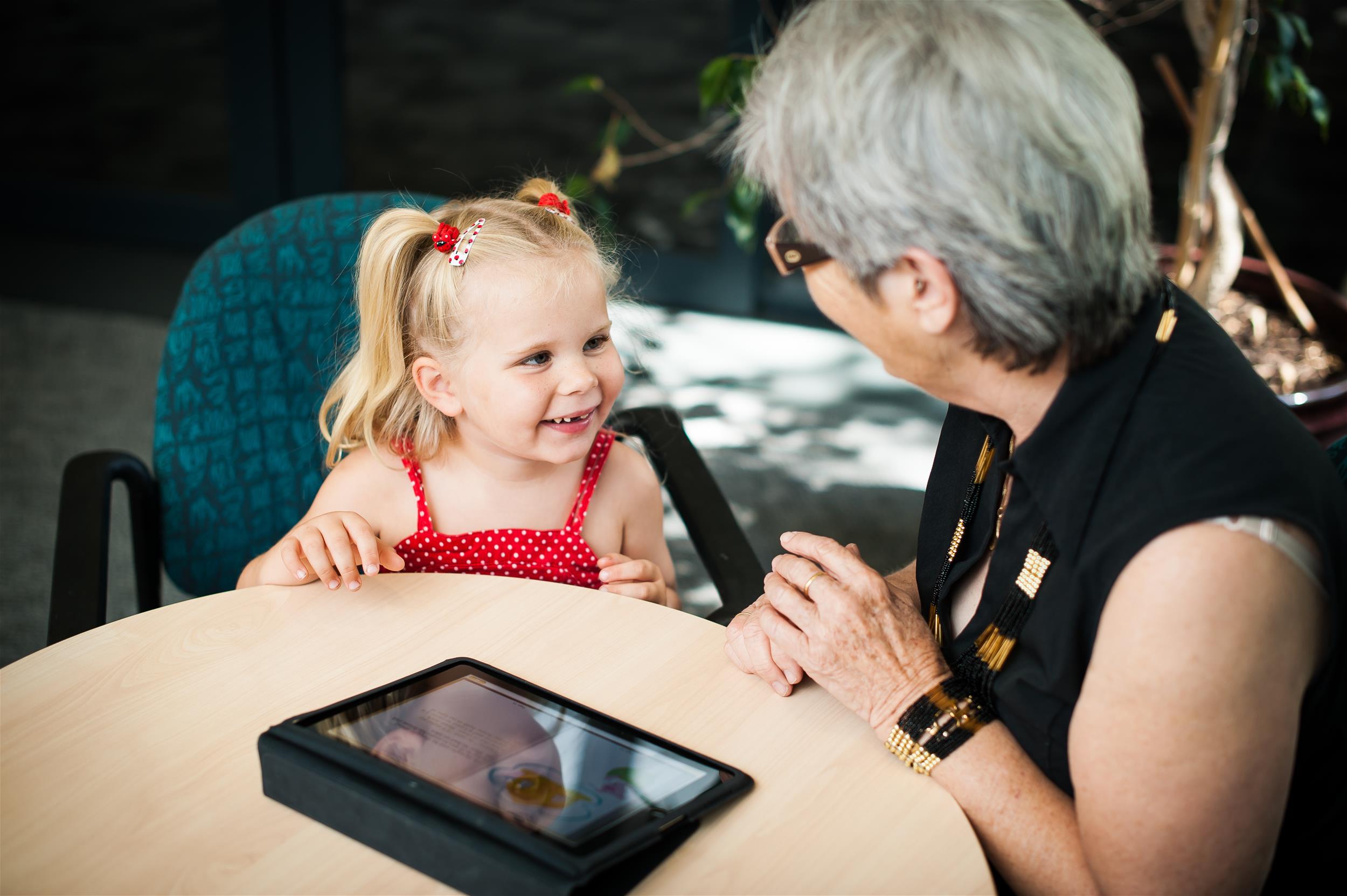Can you ever have too much technology?
24 January 2014
Emerging assistive technology, what is it and is it for you? How do you know?

Young or old, at some time in your life you are likely to experience an impairment that will affect how you interact with your environment and the people around you. Assistive technology or equipment for daily living could be the key to maintaining your independence and enjoyment of life.
You may be using a piece of ‘assistive technology’ right now and don’t even know it. It can come in many shapes and forms and be high tech or low tech. It could be a piece of mainstream technology that you use every day like a mobile or house phone but it has large buttons, the jar opener that means you don’t have to ask your husband for help to open your favourite jar of jam, it may be your son’s iPad that has that special app that engages him in learning, or the computer you sit at that speaks to you in a quirky voice reading out an email from your son overseas.
For me it is my smart phone, a grown up version of my long past small brick Nokia that I hardly used because as someone with a vision impairment it was only good for receiving phone calls, the numbers and icons being too small to make any use of. I am in another world with my smartphone, it connects me to friends all over the word, is a great work tool, it helps me plan, share photos and information, I can use it as a writing pad, a Dictaphone, an artist’s easel and download loads of free apps that turn it into a torch or a magnifier. I couldn’t live without it and I’m not joking; I am one of those people that you see with their heads in it all the time.
New and exciting assistive technology is being developed all the time and to me it seems to be happening at an amazing pace. While the aim of some developments may be to make able bodied people’s lives easier and activities safer, the implications for people with disabilities is far reaching. Other technologies are being developed specifically for people with disabilities. I am only now learning about some of them and I can’t wait to see them on the market.
Did you know that in America you can now buy a ‘driverless’ car from BMW and Audi? These cars are designed to make driving safer using steering, breaking and throttle to control acceleration, deceleration and direction in very small, exact amounts. There are also sensors, environmental modelling and decision and driving strategy technologies that BMW is working on. Read the full article here. Imagine the implications for people with disabilities and older people with a medical condition that find they are now unable to drive. I’d even consider getting behind the wheel if I could afford one of these!
In the future you will ‘train your brain’ to drive the powered wheelchair that you now drive with a joystick and exoskeletons are being built and trialled to allow people who are paralysed to walk. Brave New World with Stephen Hawking. For those with type one diabetes testing with a needle will be a thing of the past as Google kicks up the major technology trend of the year where a contact lens with a sensor will enable a person’s blood to be tested and the results sent to the wearer.
While access by consumers to this technology is still some years away; with the increase in the aging population, number of people with disabilities and our desire to stay in our homes and communities; this technology and combination of technologies is going to have a major impact on our ability to do so as long as it is affordable and for those accessing funding, seen as cost effective.
There are many who already use a range of assistive technologies to live safely and independently in their homes. There is a plethora of technologies available that meet people’s diverse needs including:
Z-Wave technology which allows you to use your smartphone to operate technology within the home including turning lights on and off and locking doors. (Z-Wave is an interoperable wireless ecosystem that lets electronic devices and systems communicate and respond via remote control).
A range of alerting devices that can be used to alert your friends or neighbours that you need assistance after a fall or as a reminder to take your medication
Don’t forget Tele-health products that can share results of tests with your health professional.
This year I am looking forward to accessing assistive technology at work that will read long paragraphs of text on my computer as my eyes can find this very tiring. At home, I would love to win lotto and have a 60 inch TV on the wall hooked up so that I can watch TV and see people’s expressions more clearly and divide the screen so that my husband and I can watch TV and view the internet at the same time using Apple TV. Of course, I will never be without my ‘smartphone’ and one day hope it will have a big brother ‘tablet’ with an attachable keyboard… I firmly believe ‘you can never have too much technology’!
What’s your favorite piece of technology or equipment? We, at Indigo Solutions like to know.

 Translate
Translate